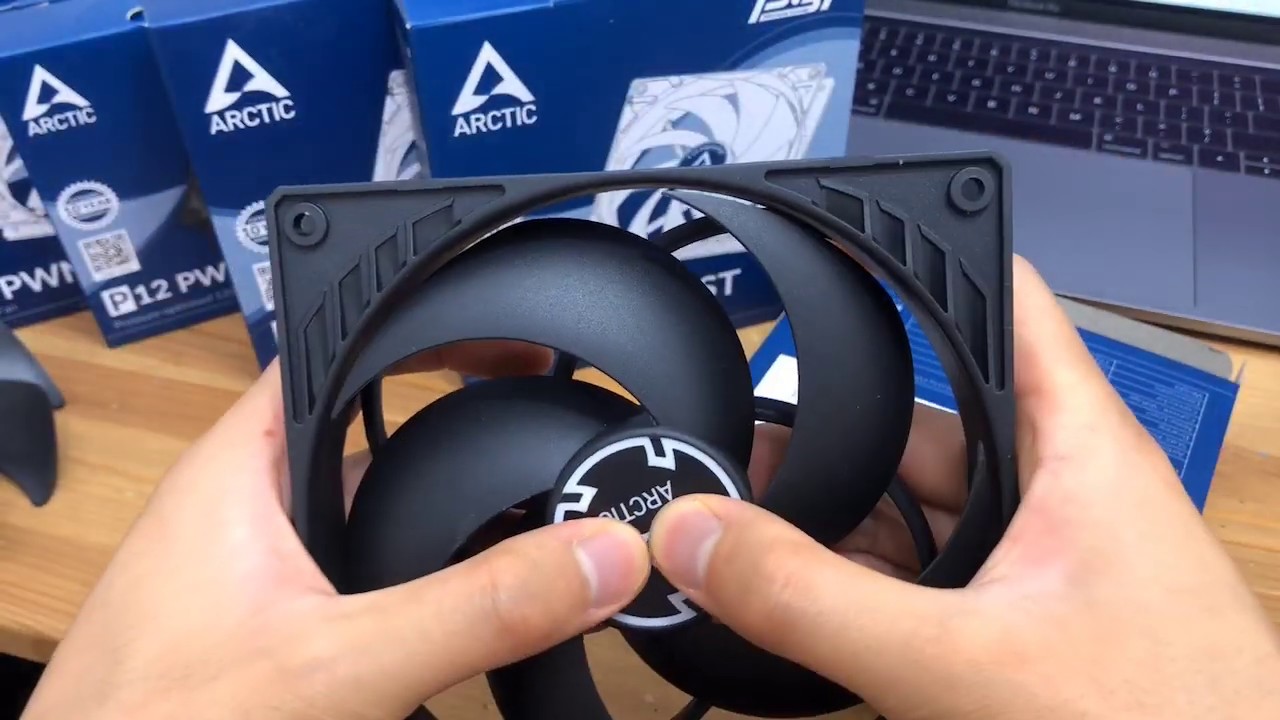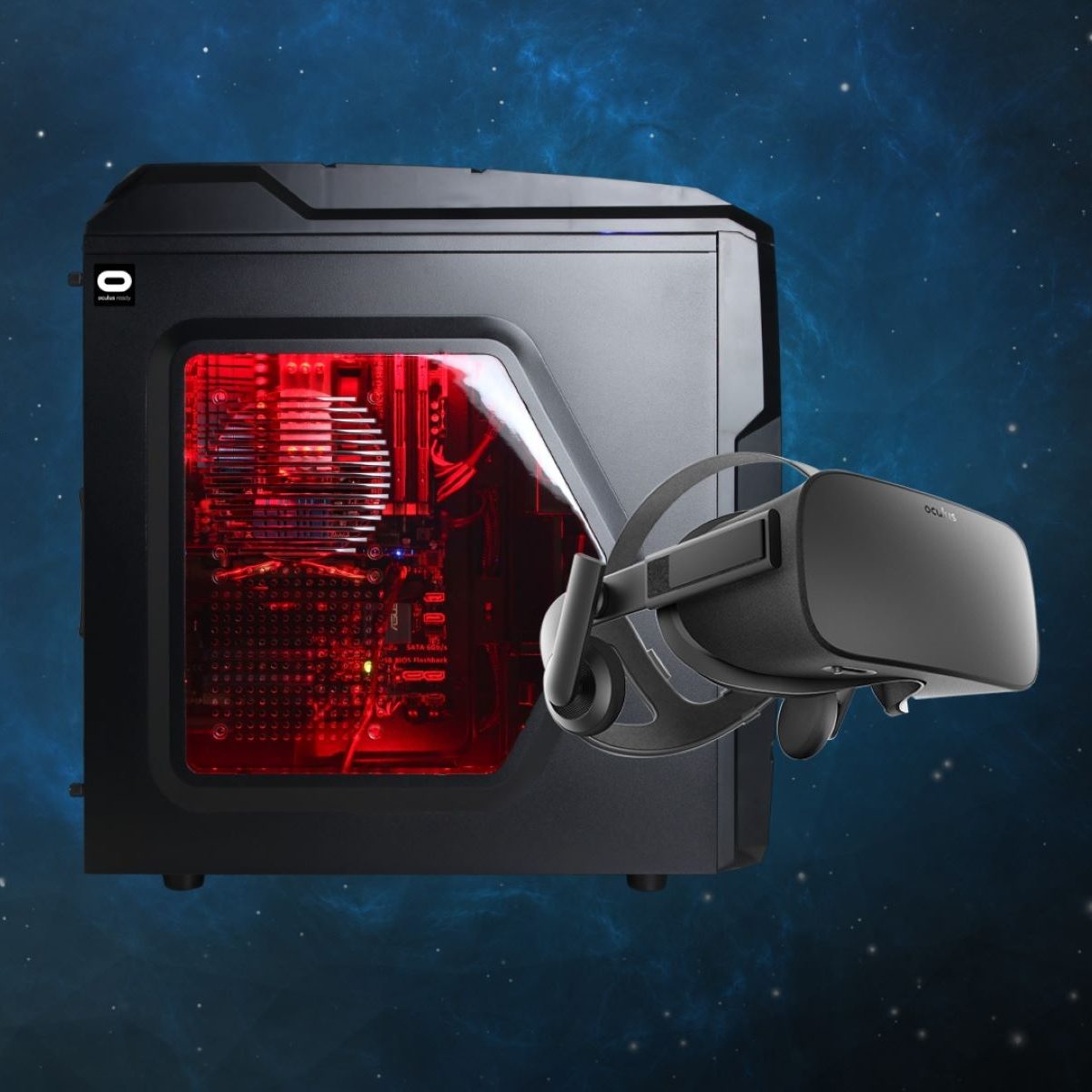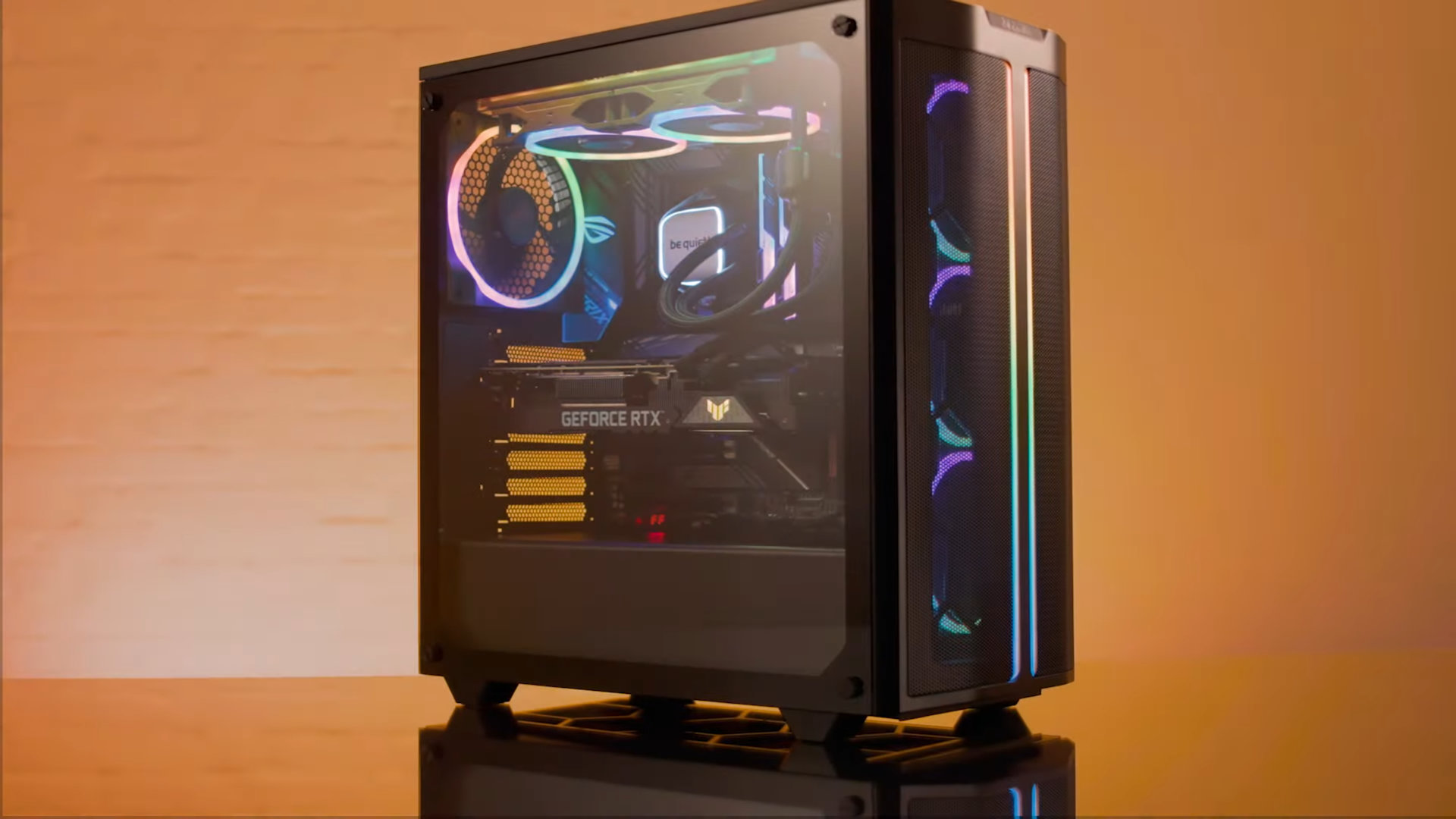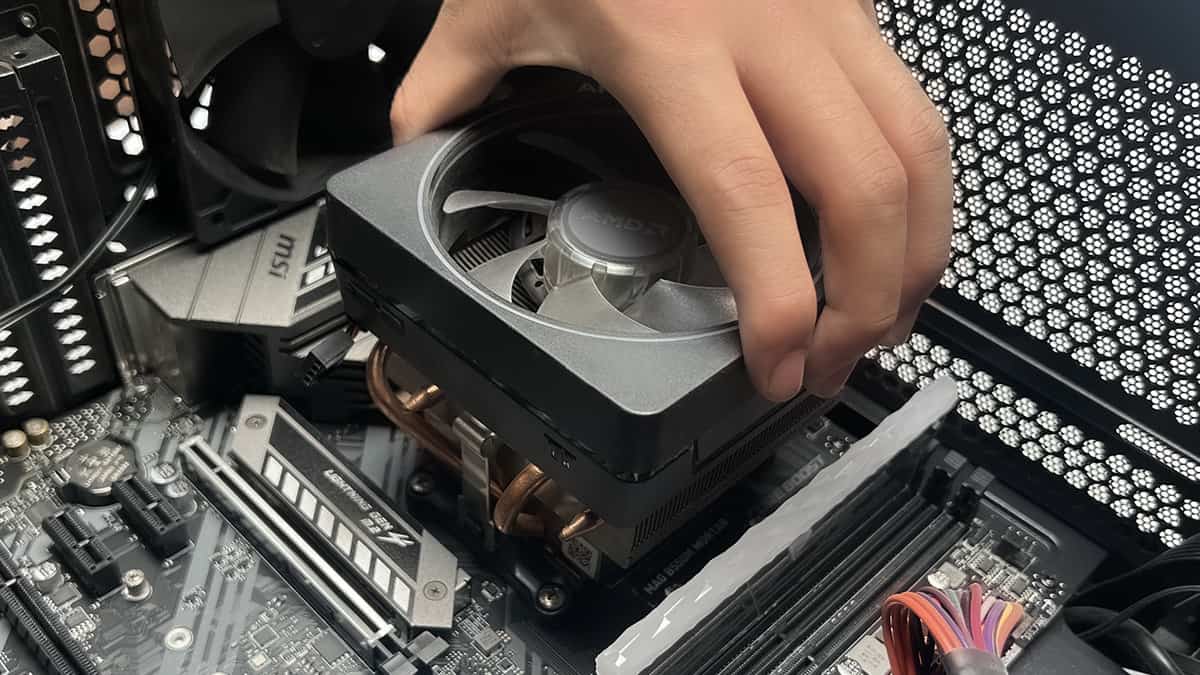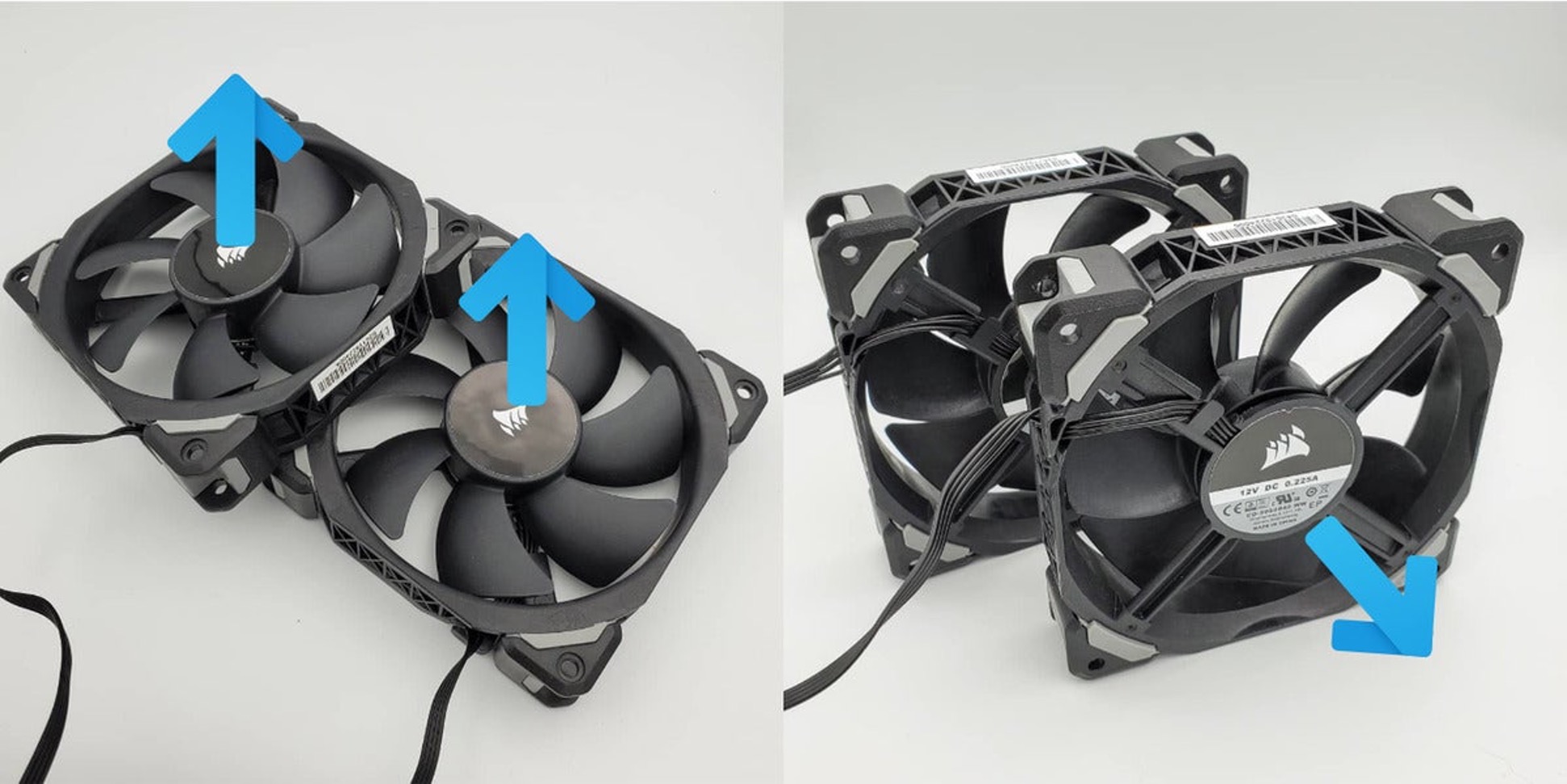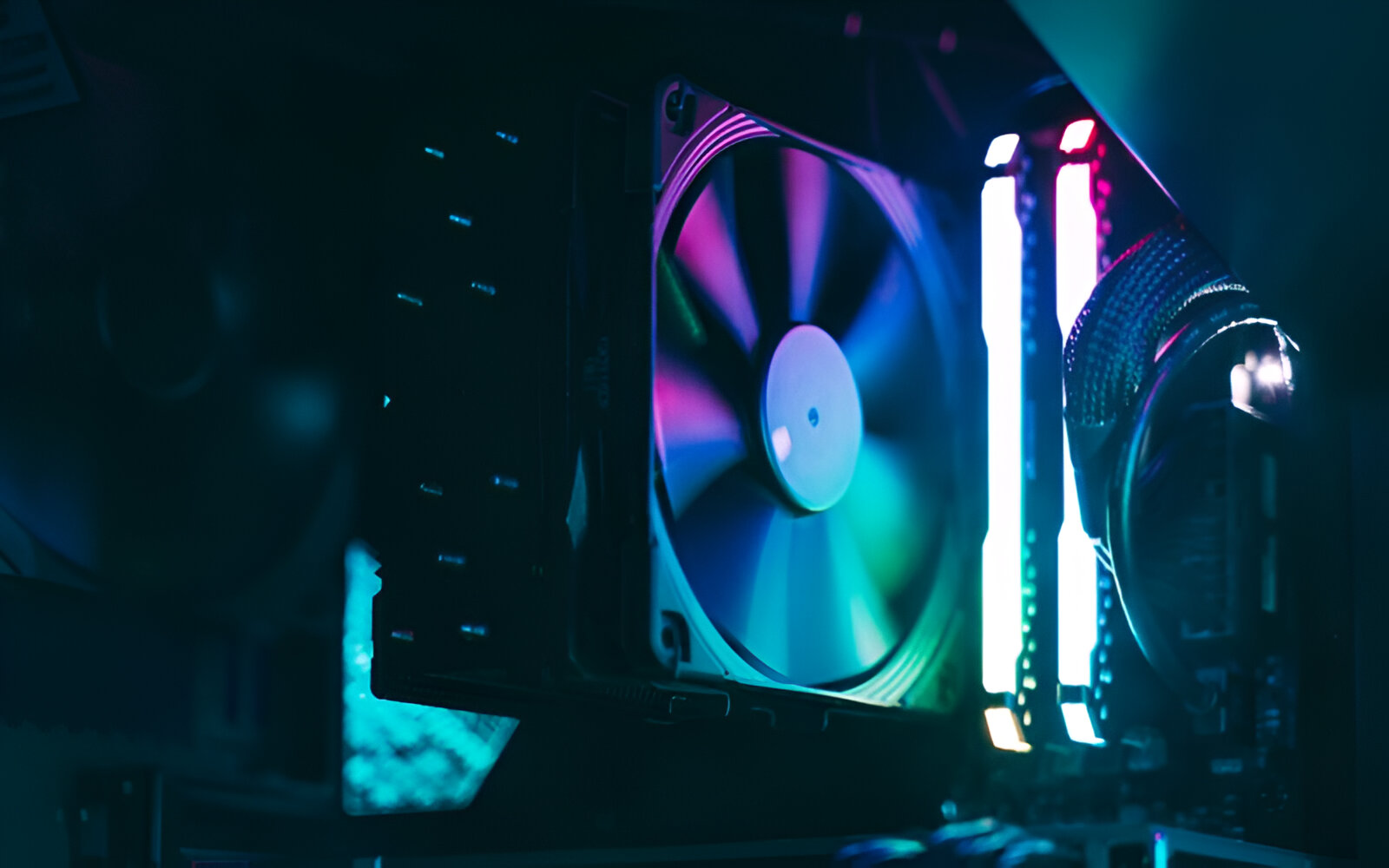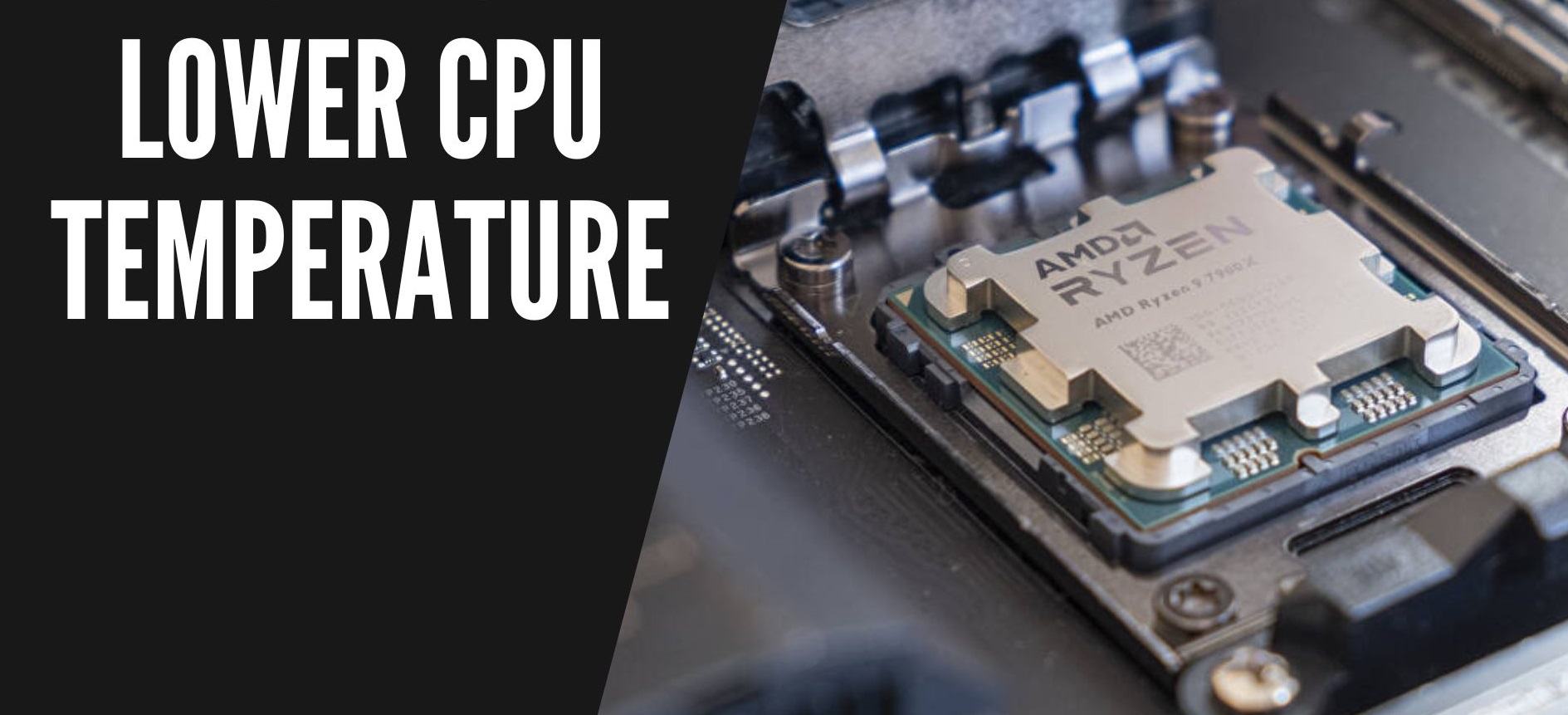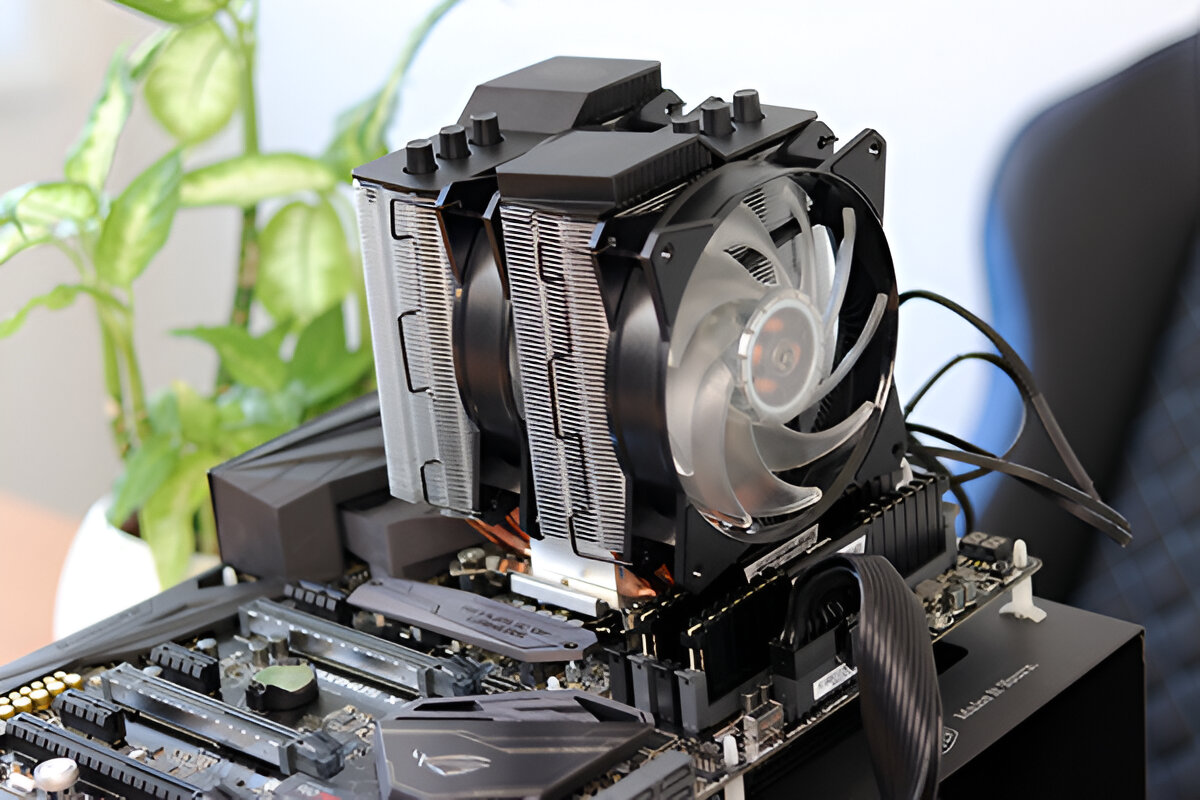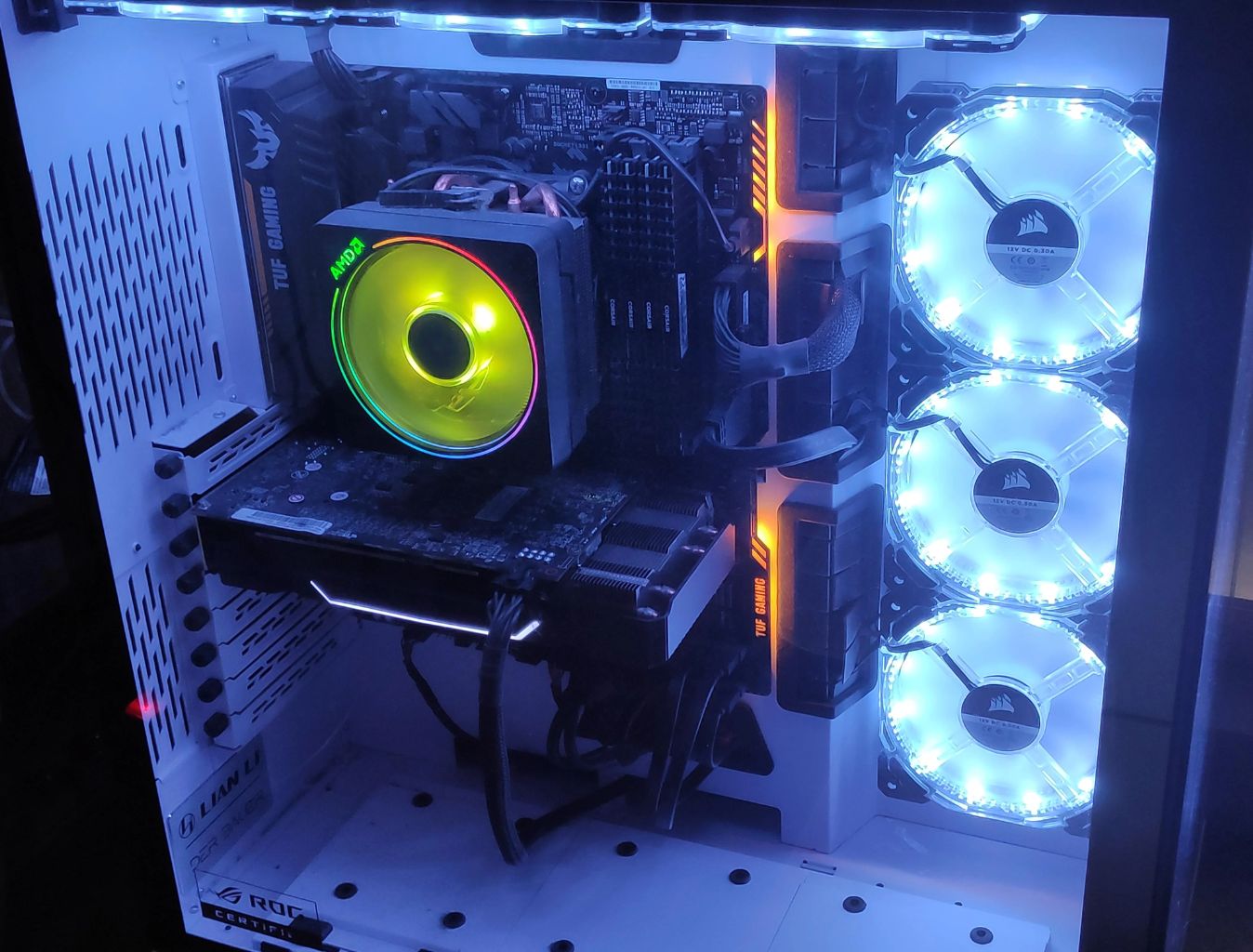Introduction
When it comes to keeping your CPU cool, a crucial aspect to consider is the placement of the exhaust for your CPU cooler. Proper placement of the exhaust ensures efficient heat dissipation and helps maintain optimal performance of your computer. Whether you are an avid gamer, a content creator, or simply someone who uses their computer for everyday tasks, understanding the importance of proper exhaust placement is vital.
Excessive heat can lead to thermal throttling, reduced performance, and even potential damage to your CPU. To avoid these issues, you need to carefully consider where to position the exhaust for your CPU cooler. This decision is dependent on various factors, including the case design, airflow configuration, and the type of CPU cooler you have.
In this article, we will explore the different options for CPU cooler exhaust placement and discuss the pros and cons of each. By the end, you will have a better understanding of where to put the exhaust for your CPU cooler, allowing you to optimize cooling performance and extend the lifespan of your system.
Importance of Proper Placement
The proper placement of the exhaust for your CPU cooler plays a significant role in maintaining the overall temperature and performance of your computer. Here are a few reasons why this is so important:
1. Heat Dissipation: The main purpose of the CPU cooler is to dissipate the heat generated by the processor. If the exhaust is not positioned correctly, the hot air can remain trapped inside the case, leading to a buildup of heat. This can cause the CPU to overheat, resulting in reduced performance and potentially damaging the processor over time. By placing the exhaust in the right location, you can ensure that hot air is efficiently expelled from the case.
2. Airflow Efficiency: Proper exhaust placement assists in maintaining a balanced airflow within the computer case. When the air circulates smoothly, it helps to cool other components, such as the motherboard and graphics card. It also prevents the formation of hotspots, reducing the risk of thermal throttling. By optimizing the airflow, you can create a more efficient cooling system, enhancing the overall stability and longevity of your computer.
3. Reducing Noise: Inadequate exhaust placement can contribute to increased noise levels. When hot air is not effectively directed out of the case, it can lead to the fans working harder to dissipate the heat. This can result in louder fan noise, disrupting your computing experience. By placing the exhaust properly, you can achieve a quieter system, as the fans can operate more efficiently at lower speeds.
4. System Longevity: Overheating can have a detrimental impact on the lifespan of your computer components, particularly the CPU. Excessively high temperatures can cause the CPU to degrade faster, shortening its longevity. Proper exhaust placement ensures that the CPU operates within a safe temperature range, prolonging its lifespan and preventing premature failure.
By understanding the importance of proper exhaust placement, you can take proactive measures to optimize cooling efficiency, reduce noise levels, and preserve the longevity of your computer components.
Factors to Consider
When deciding where to put the exhaust for your CPU cooler, there are several factors to consider. These factors will help you determine the most optimal placement for your specific setup. Here are some key considerations to keep in mind:
1. Case Design: The design of your computer case plays a crucial role in determining the possible locations for the exhaust. Cases can have different configurations, including the presence of specific areas for fans or vents. It’s important to understand the layout of your case and identify potential areas where the exhaust can be placed.
2. Airflow Configuration: The overall airflow configuration of your computer case is important to consider. This includes the placement and orientation of intake and exhaust fans. Ideally, you want to create a streamlined airflow that promotes the movement of cool air into the case and the expulsion of hot air. Assessing the existing airflow can help you identify the best location for the CPU cooler exhaust.
3. CPU Cooler Type: The type of CPU cooler you have is another significant factor. There are different types of coolers available, including air coolers and liquid coolers. Each type may have specific recommendations for exhaust placement. For example, an air cooler typically requires a rear or top exhaust, while a liquid cooler may have more flexibility in terms of placement options.
4. Compatibility with Other Components: Consider the compatibility of your chosen exhaust placement with other components inside the case. Ensure that the exhaust does not obstruct other important elements such as RAM slots, PCI-E slots, or cables. It’s important to maintain proper clearance and avoid any interference that could impact the overall performance or installation of other components.
5. Noise Considerations: Additionally, consider the noise implications of your chosen exhaust placement. Some locations, such as a rear exhaust near the user, may result in more noticeable fan noise. If noise reduction is a priority for you, you may need to explore alternate locations that offer a better balance between cooling performance and noise levels.
By taking these factors into account, you can make an informed decision about the ideal placement for the exhaust of your CPU cooler. Remember to balance cooling performance, system compatibility, and noise considerations to achieve the best possible results.
Rear Exhaust
One popular option for CPU cooler exhaust placement is the rear of the computer case. This location is often found in standard ATX cases and offers several advantages:
- Efficient Heat Removal: Placing the exhaust at the rear of the case allows for the hot air from the CPU cooler to be quickly expelled. This helps to maintain lower temperatures inside the case, preventing heat buildup and potential thermal throttling.
- Optimal Airflow: The rear exhaust works in tandem with the front or side intake fans to create a directional airflow. Cool air is brought in from the front or side, while hot air is pushed out through the rear. This streamlined airflow pattern helps to prevent the recirculation of hot air and maintains a more efficient cooling process.
- Noise Control: Placing the exhaust at the rear of the case can help minimize noise levels. Since the rear exhaust is usually situated away from the user, any fan noise generated by the CPU cooler is less noticeable compared to other locations. This can result in a quieter computing experience.
However, there are a few considerations to keep in mind regarding rear exhaust placement. First, ensure that there is adequate clearance between the CPU cooler and the rear exhaust fan. This will help to avoid any potential airflow obstruction and maintain optimal cooling performance. Additionally, be mindful of the length of the CPU cooler and the overall space available in the case, as this can impact the feasibility of using a rear exhaust.
Overall, a rear exhaust placement is a popular choice due to its efficient heat removal capabilities, optimal airflow configuration, and noise control benefits. If your computer case allows for it, and space permits, the rear exhaust can be an effective option in maintaining optimal CPU cooling.
Top Exhaust
Another option for CPU cooler exhaust placement is at the top of the computer case. The top exhaust configuration offers several advantages:
- Heat Dissipation: Placing the exhaust at the top of the case allows for the hot air to naturally rise and be expelled. This helps to effectively remove heat from the CPU and other components, preventing heat buildup and ensuring optimal performance.
- Improved Airflow: The top exhaust works in conjunction with the front or side intake fans to facilitate a vertical airflow pattern. Cool air is drawn in from the front or side, while the hot air is pushed out through the top. This airflow configuration promotes the efficient movement of air and helps to maintain a balanced temperature inside the case.
- Flexible Cooling Configurations: The top exhaust configuration offers flexibility in terms of cooling options. It allows for the addition of extra fans or even a liquid cooling radiator mounted at the top. This can provide enhanced cooling performance for overclocked systems, high-end processors, or setups that demand exceptional heat dissipation.
However, there are a few considerations to keep in mind with top exhaust placement. First and foremost, ensure that the top exhaust location is compatible with your CPU cooler. Some coolers may be too tall and interfere with the available space at the top of the case. Additionally, the top exhaust placement may require additional dust filtration measures to prevent dust accumulation due to the air being expelled upwards.
It is also important to note that the top exhaust location may not be practical for cases that are placed in enclosed spaces or have limited vertical clearance. In such cases, the top exhaust may not be able to effectively expel the hot air, leading to heat buildup and potentially higher CPU temperatures.
Overall, the top exhaust placement offers efficient heat dissipation, improved airflow, and flexibility for various cooling configurations. If your computer case allows for it and has sufficient clearance, the top exhaust can be a viable option for maintaining optimal CPU cooling performance.
Side Exhaust
One less common but still viable option for CPU cooler exhaust placement is the side of the computer case. While not as prevalent as rear or top exhaust configurations, side exhaust offers a few unique advantages:
- Direct Heat Removal: Placing the exhaust on the side of the case allows for direct expulsion of the hot air from the CPU cooler. This can result in more efficient heat dissipation, ensuring that the CPU and other components operate at lower temperatures.
- Additional Component Cooling: Side exhaust can help to cool other components, such as graphics cards or RAM modules, that are positioned in close proximity to the CPU. By expelling hot air from the side, it reduces the chances of heat spreading to nearby components, thus promoting overall system stability.
- Unique Case Design: Some computer cases are specifically designed to accommodate side-mounted exhaust fans, making it an attractive placement option. These cases may feature mesh panels or ventilation slots on the side to facilitate improved airflow and heat dissipation.
However, there are a few considerations to keep in mind with side exhaust placement. First, ensure that the case design allows for side exhaust, and there is sufficient space for mounting fans or ventilation. Additionally, make sure that the side exhaust does not interfere with other components, such as large CPU coolers or tall memory modules, as this may affect compatibility.
Furthermore, side exhaust can be less effective if the case is placed against a wall or in a confined space. This restricts the airflow around the computer, limiting the ability of the side exhaust to expel hot air properly. In such situations, alternative exhaust configurations may be more suitable.
Overall, side exhaust placement can provide direct heat removal, additional component cooling, and is well-suited for cases designed with this configuration in mind. If your case supports it and there is adequate clearance, side exhaust can be a viable option for optimizing CPU cooling and overall system performance.
Front Exhaust
One less conventional but still viable option for CPU cooler exhaust placement is the front of the computer case. While front exhaust is not as common as rear or top configurations, it offers some distinct advantages:
- Cool Air Intake: Placing the exhaust at the front of the case allows for cool air to be drawn in by the intake fans. This brings fresh air directly to the CPU cooler and other components, helping to maintain lower temperatures and efficient heat dissipation.
- Renewed Airflow: The front exhaust works in conjunction with other fans to create a renewed airflow pattern. Fresh air enters from the front, passes over the CPU cooler, and is expelled out the back or top of the case. This setup can help to minimize the recirculation of warm air and promote better overall cooling performance.
- Reduced Noise: Placing the exhaust at the front of the case can contribute to reduced noise levels. The front exhaust fans can operate at lower speeds, resulting in quieter operation compared to rear or top-mounted configurations, which are closer to the user.
However, front exhaust placement also comes with some considerations. First, ensure that your computer case is specifically designed to support front exhaust fans. Not all cases have provisions for fans on the front panel, or they may have limited space for cooling options.
Also, be aware that front exhaust can disrupt the aesthetics of the case, as it involves routing cables and fan connections towards the front of the motherboard. This may impact the overall cable management and appearance of the system.
Lastly, front exhaust might not be suitable for cases placed in enclosed spaces or against walls, as this can restrict airflow to the front intake fans and limit their effectiveness. In such situations, alternative exhaust configurations should be considered.
In summary, front exhaust placement offers direct cool air intake, improved airflow configuration, and reduced noise levels. If your computer case supports it and has sufficient space for front fans, this configuration can be a viable option for maintaining optimal CPU cooling and overall system performance.
Bottom Exhaust
While less common, another option for CPU cooler exhaust placement is at the bottom of the computer case. Although not widely used, bottom exhaust offers some unique advantages:
- Improved Heat Dissipation: Placing the exhaust at the bottom of the case allows for the natural rise of hot air. As hot air tends to rise, positioning the exhaust at the bottom can efficiently remove the heat from the CPU cooler and other components, maintaining lower overall temperatures.
- Dust Control: Bottom exhaust configurations often incorporate dust filters. These filters actively prevent dust from entering the case through the exhaust location, reducing the accumulation of dust on the CPU cooler and other internal components. This can improve overall system stability and prolong the lifespan of your computer.
- Enhanced Cable Management: By placing the exhaust at the bottom, you can route your cables more effectively. This helps improve cable management and overall airflow within the case, reducing clutter and potentially improving cooling performance.
However, there are some considerations to keep in mind before opting for a bottom exhaust placement. Not all computer cases are designed to accommodate this configuration, so ensure that your case supports a bottom exhaust location. Additionally, verify that the case provides adequate clearance for the CPU cooler to ensure proper airflow and prevent any obstruction.
Another factor to consider is the surface on which you place your computer. If the case is placed on carpet or any other soft or uneven surface, it may restrict the airflow from the bottom exhaust, hindering its effectiveness. Placing your computer on a hard, flat surface is recommended for optimal cooling performance.
In summary, bottom exhaust placement can offer improved heat dissipation, dust control through filters, and enhanced cable management. If your computer case allows for it, and the necessary conditions are met, a bottom exhaust configuration can be a viable option for maintaining optimal CPU cooling and overall system performance.
Conclusion
Deciding where to put the exhaust for your CPU cooler is an essential aspect of optimizing the cooling performance and overall stability of your computer. Proper placement ensures efficient heat dissipation, maintains optimal temperatures, and enhances the longevity of your components.
There are several options to consider when choosing a CPU cooler exhaust location. The rear exhaust is a popular choice due to its efficient heat removal and optimal airflow configuration. The top exhaust offers improved heat dissipation and flexibility for various cooling configurations. The side exhaust provides direct heat removal and can aid in cooling nearby components. The front exhaust allows for cool air intake and renewed airflow pattern. The bottom exhaust, though less common, offers improved heat dissipation, dust control, and enhanced cable management opportunities.
When deciding on the appropriate exhaust placement, consider factors such as the case design, airflow configuration, the type of CPU cooler, and compatibility with other components. Additionally, noise considerations and the positioning of your computer case should be taken into account to ensure the best cooling solution for your needs.
By carefully considering these factors and selecting the right exhaust placement, you can achieve optimal CPU cooling performance, prevent heat-related issues, and prolong the lifespan of your system. Remember to regularly monitor temperatures and airflow to ensure the continued efficiency of your cooling setup.







